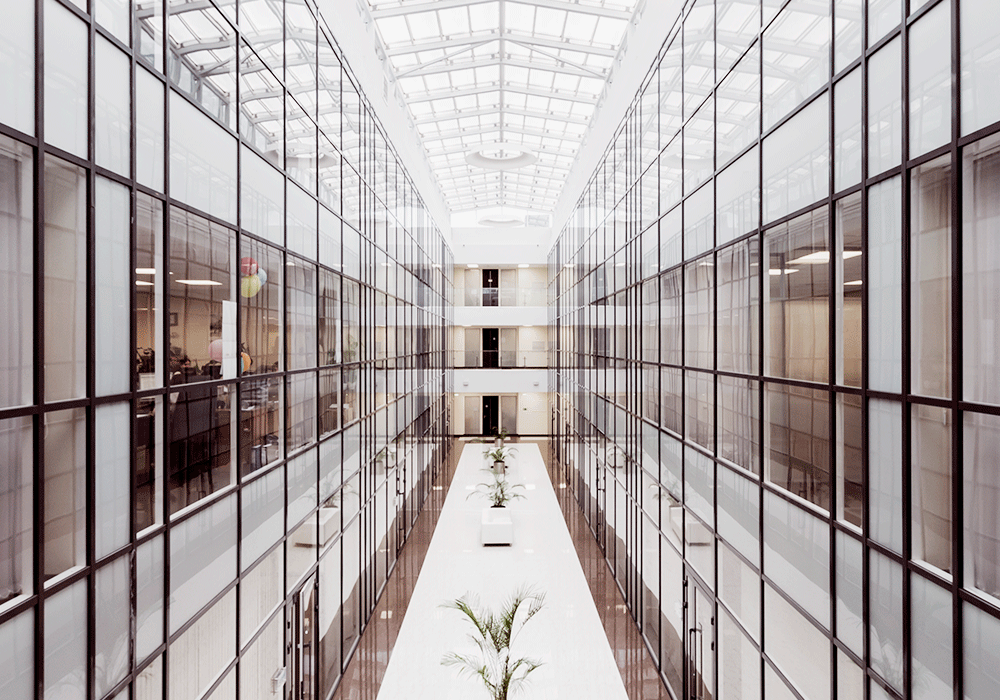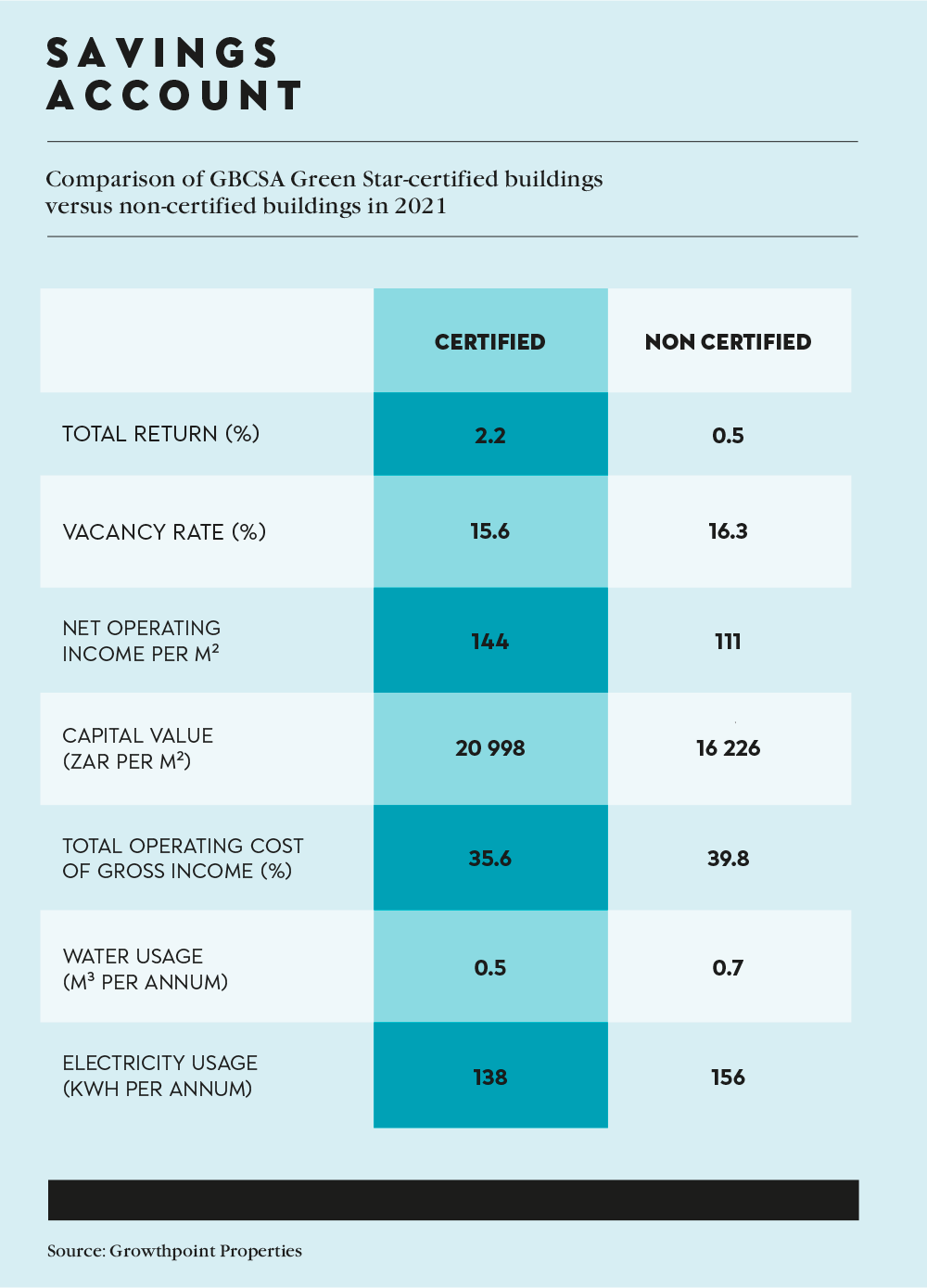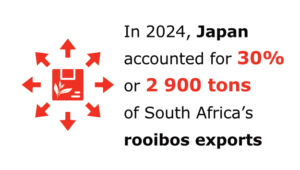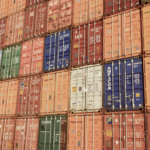South Africa’s reliance on coal puts the country in the world’s top 20 greatest emitters of greenhouse gases; not a great list in which to be included. Buildings account for as much as 15% of the country’s greenhouse gas emissions. For many years now, South Africa has been moving towards greater energy efficiency, with various regulations and the National Energy Efficiency Strategy driving this.
Key to this is regulation for the mandatory display and submission of energy-performance certificates (EPCs) for certain buildings. An EPC is a document that displays the energy consumption per square metre of a building, and provides a useful baseline to understand that building’s energy needs and uses. An EPC rates buildings on a scale of A to G, similarly to how appliances are rated for their energy efficiency. A D-rating is the benchmark, which is in line with the National Building Regulations. The EPC regulations were made effective in December 2020, and must be displayed in buildings by December 2022.
Not all buildings will be impacted by the regulations, as they only apply to privately owned, non-residential buildings with a net floor area exceeding 2 000 m2 (such as educational institution buildings, offices, entertainment facilities, sporting facilities and community centres), and to buildings with a net floor area exceeding 1 000 m2 that are government-owned or occupied, or operated by an organ of state.
While the regulations do provide penalties for any particular rating lower than an A-rating, the primary objective in obliging building owners to obtain EPCs is to make them aware of their energy consumption and encourage them to be more energy efficient if their EPC rating is poor. There is currently no baseline in South Africa, which means it is not known how well it’s doing or how much carbon it must mitigate to achieve net zero by 2050 for existing buildings.
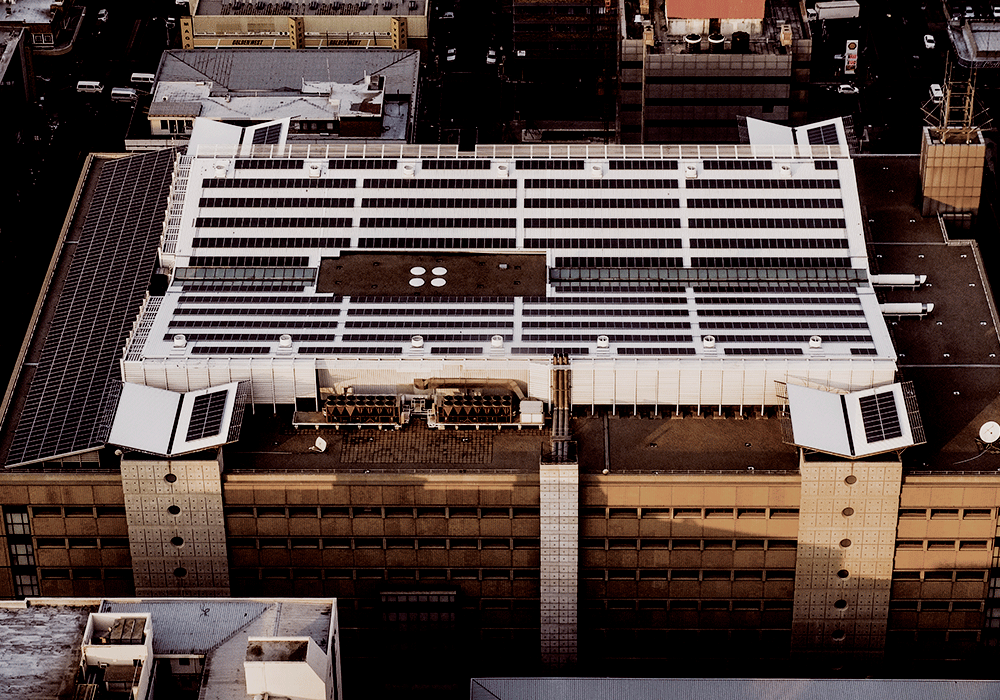
In terms of how this new regulatory framework fits into the overall efforts to achieve net zero by 2050, Lisa Reynolds, CEO of the Green Building Council South Africa (GBCSA), says EPCs are a starting point for existing buildings to obtain an understanding of their energy consumption. ‘The data gathered will give national government insight into emissions associated with operating our existing building stock.’ Ultimately, the requirement of having an EPC will play a key role in reducing CO2 emissions in South Africa’s building sector, which is crucial to improving energy efficiency.
EPCs will also provide much-needed data to assess and monitor what proportion of the country’s emissions can indeed be attributed to buildings, and how a focus on energy efficiency can make a positive contribution towards South Africa’s Nationally Determined Contributions (NDCs) reduction targets.
Barry Bredenkamp, GM of energy efficiency at the South African National Energy Development Institute, says that compliance with EPC regulations will enable building owners to identify where they could introduce energy-efficiency measures that would not only save them money but potentially also increase the value of their buildings.
‘An energy-efficient building is generally a better environment in which to work and is significantly less expensive to run, so an owner can potentially justify a higher price if they want to sell or impose a higher rental for office space,’ he says. ‘The more energy efficient buildings become, the more they will contribute to taking electricity demand off the national grid. This could help ease load shedding. And by reducing carbon emissions, building owners will be helping our country to meet its international obligations to combat climate change.’
Bredenkamp notes that EPC programmes are commonplace in many parts of the world and in some cases, even extend right down to the level of residential buildings. They are one of many energy-efficiency measures currently being implemented to drive down fossil fuel consumption and carbon emissions worldwide, he explains. ‘We had cause to celebrate when South Africa introduced EPC international best-practice a year ago, and we are hoping that many more of our building owners will see the value in energy efficiency.’
The current economic climate aside, South Africa is still seeing good momentum as far as green building is concerned. Despite the economic downturn and state of the construction and property sectors, the GBCSA had a record number of green-building certifications in 2021 – a trend that has continued during 2022.
‘There’s been a significant uptick generally in conversations around sustainability, whether it be linked to green building, ESG reporting or sustainable financing,’ says Reynolds. ‘Similarly, the impacts of climate change and extreme weather seem to be driving home the message that we need swift and meaningful action to ensure our survival as a nation, let alone a better future.’
The construction and property sectors at large have a major role to play in the decarbonisation pathways for South Africa, she adds. ‘Supporting policies and action from cities will support a just transition to a low-carbon economy. The design, construction, operation and management of more efficient and green buildings offers economic opportunity along the whole supply chain – a critical and urgent issue that needs addressing in our nation.’
Reynolds believes that, in terms of sectors, industrial buildings present the most opportunity, primarily because they have a large roof space that can be used for embedded generation. ‘Somewhat more complex, there is also a large amount of existing commercial stock that needs to be bought up to date, made more energy efficient and investor attractive to avoid becoming stranded assets.’
Alison Groves, regional director at WSP Building Services Africa, says that green buildings are important in terms of increasing resilience to the impacts of climate change, including resource constraints and future weather assaults that may affect comfort and safety. ‘They also offer optimised building performance and therefore commercial viability. If specified and installed correctly, systems and structures can produce a sustainable return on investment that may amount to between 20% and 70% of energy and gain revenue through this investment,’ she says.
Further driving the trend is the fact that tenants – international tenants in particular – are demanding green buildings, says Groves. ‘They will not move into a space that isn’t green because their sustainability reports have to include their sustainability efforts, and being in a green building contributes to this.’
Groves believes the requirement to display an EPC will do well in driving efficiency. ‘It’s a public declaration of how great a building is or isn’t. It’s this external validation that will drive the industry to change,’ she says.
There are many interventions currently that can be implemented to make buildings more sustainable, such as optimising thermal comfort and fresh-air availability; improving energy efficiency through the use of natural light balanced with efficient light fittings and smart switching; improving water consumption with more efficient fittings; onsite recycling access; and carefully using or reusing materials in such a way that it reduces the embodied carbon of the development. Another innovation being seen much more frequently nowadays is rooftop solar PV. Companies can now instal large-scale systems, and changing legislation has made it worthwhile to pursue, according to Groves.
As the GBCSA introduces more rating tools, so the construction industry’s uptake for green buildings has skyrocketed, she says. ‘Although it was previously thought to be more expensive to make the upfront capital investments to go green, the constrained availability of power and water resources, as well as cost volatility, is influencing a mindset change.
‘In fact, building green, or building for sustainability, is becoming an industry standard in the local commercial market – largely driven by continuous and growing pressure being placed on the built space to address inadequate energy resources, carbon-reduction targets and recently revised building energy-efficiency standards for the country.’
However, Groves cautions, a collection of green buildings is not enough to make up a green town or city. ‘Urbanisation, demographic shift, environmental changes and new technologies are reshaping the way city leaders are looking at sustainability – both out of necessity and opportunity,’ she says.
‘Resilience and liveability must be the desired outcomes sought through planning and design processes – and ultimately the goal should be that we are building liveable spaces that are people-centric, integrated, connected, smart, nimble and resilient – where societies can thrive, well into the future.
‘In Africa, the social agenda is maturing at a rapid pace and cookie-cutter solutions of the past have now made way for more mature and in-depth engagement.’

